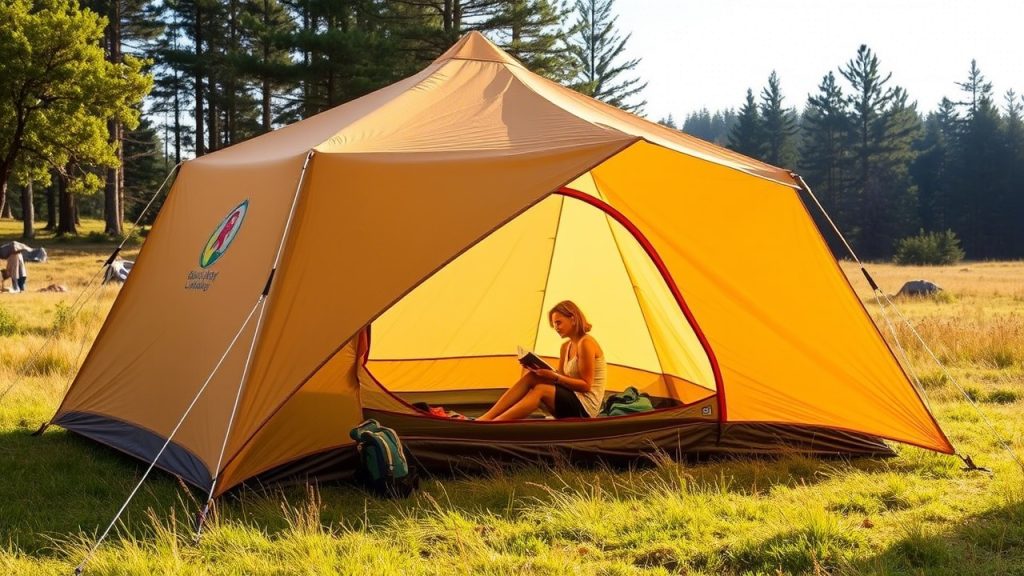Camping is one of the best ways to reconnect with nature, unplug from daily life, and experience the outdoors. But let’s be honest — no one enjoys sleeping on hard ground, freezing through the night, or cramming into a tiny tent with barely enough room to turn over. The good news? You don’t have to sacrifice comfort to keep your camping gear lightweight.
This post will guide you through 9 of the best tent ideas to add comfort without bulk, making your next adventure restful, cozy, and hassle-free. Whether you’re heading into the backcountry, taking the family to a local campground, or hitting a multi-day trail, these ideas will help you sleep better and enjoy every moment.
Why Comfort Matters in Lightweight Camping
When people think about backpacking or lightweight camping, they often focus only on cutting ounces: a smaller stove, lighter sleeping bag, fewer clothes. But focusing too much on reducing weight can make your trip uncomfortable, which might cut your adventure short.
Here’s why comfort matters, even when you’re trying to keep bulk down:
- Better sleep means better energy on the trail.
- More relaxation means you’ll actually enjoy your downtime at camp.
- Less frustration keeps your group or family happy and cooperative.
- Protection from the elements helps prevent injuries or illnesses.
The key is finding smart, lightweight gear and setups that give you the best of both worlds.
9 Best Tent Ideas to Add Comfort Without Bulk
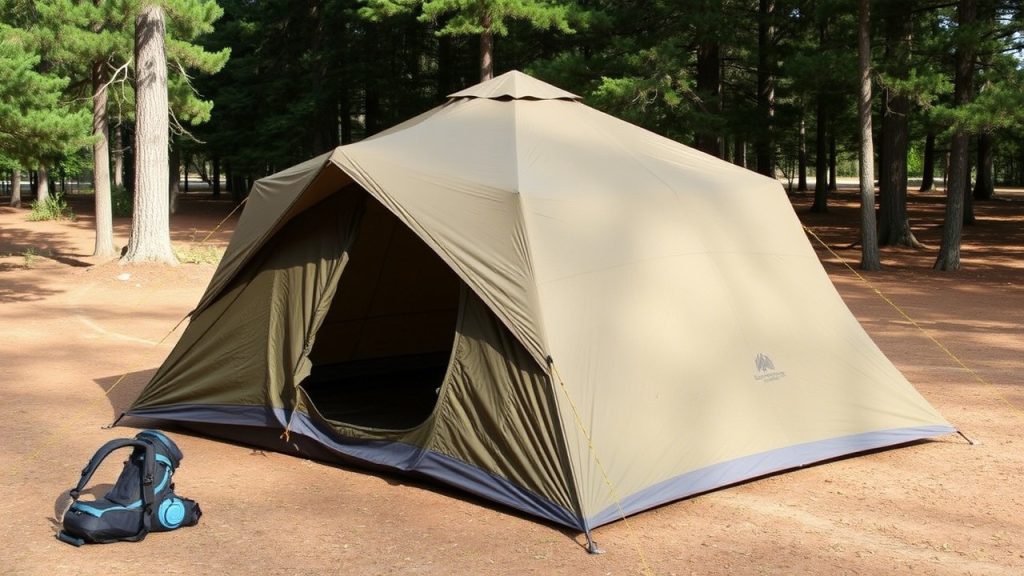
1. Choose a Lightweight Double-Wall Tent
Double-wall tents include an inner tent (usually mesh) and a separate rainfly. While they may seem heavier than single-wall designs, today’s models use ultra-light materials that provide better ventilation and weather protection without adding much weight.
Why it adds comfort:
- Reduces condensation buildup
- Provides better airflow
- Offers privacy and insect protection
Recommended tents:
- Big Agnes Copper Spur HV UL2
- MSR Hubba Hubba NX
- Nemo Dagger OSMO 2P
These tents are lightweight, roomy, and easy to set up, making them a great foundation for comfort-focused campers.
2. Invest in a Quality Sleeping Pad
Your tent is only as comfortable as what you put inside it. A high-quality, lightweight sleeping pad can transform a hard, cold surface into a cushioned, insulated bed.
Why it adds comfort:
- Provides cushioning for hips, back, and shoulders
- Insulates from the cold ground
- Reduces pressure points
Recommended sleeping pads:
- Therm-a-Rest NeoAir XLite
- Sea to Summit Ether Light XT Insulated
- Nemo Tensor Insulated
Look for pads with an R-value (insulation rating) appropriate for the weather you’ll encounter, without going overboard on thickness and weight.
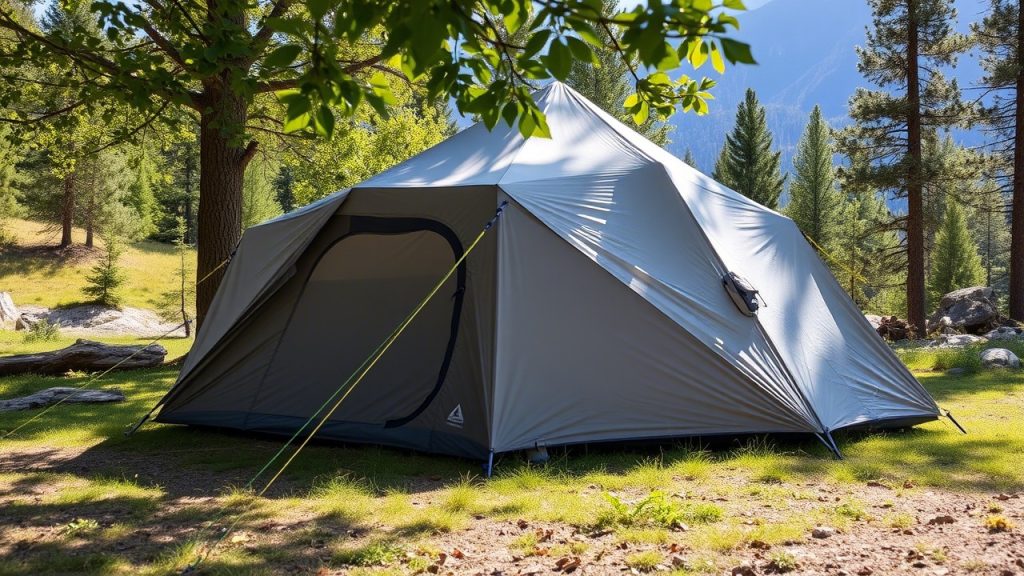
3. Use an Ultralight Footprint or Groundsheet
A tent footprint or groundsheet protects your tent floor from abrasion, moisture, and punctures. While some campers skip this to save weight, using an ultralight version can greatly improve comfort by keeping you dry and extending the life of your tent.
Why it adds comfort:
- Prevents moisture from seeping into the tent
- Adds a clean layer between the ground and your gear
- Helps keep your sleeping space warmer
Many manufacturers offer custom footprints, or you can make your own from lightweight Tyvek or polycryo sheets.
4. Opt for a Semi-Freestanding Design
Semi-freestanding tents combine the best of freestanding and non-freestanding designs. They require minimal staking, hold their shape well, and set up easily on rocky or uneven terrain.
Why it adds comfort:
- Sets up faster and more securely
- Handles rough campsites better
- Reduces stress during bad weather
Recommended models:
- REI Quarter Dome SL2
- Big Agnes Tiger Wall UL2
- MSR Freelite 2
These tents allow you to camp comfortably even when the perfect flat spot is hard to find.

5. Focus on Ventilation Features
Nothing kills comfort like waking up in a damp, clammy tent. Prioritize tents with thoughtful ventilation designs, such as top vents, mesh panels, or adjustable rainfly openings.
Why it adds comfort:
- Reduces condensation and keeps your gear dry
- Improves airflow on warm nights
- Helps regulate temperature
Look for tents with cross-ventilation, especially if you camp in humid or variable climates.
6. Choose a Tent with Vertical or Pre-Bent Walls
Tents with vertical walls, pre-bent poles, or a hubbed-pole design offer more usable interior space without increasing weight.
Why it adds comfort:
- Allows you to sit up comfortably
- Provides extra shoulder and headroom
- Creates a less claustrophobic sleeping environment
Recommended designs:
- Nemo Hornet Elite OSMO
- Marmot Tungsten Ultralight
- Zpacks Duplex
You’ll appreciate the extra space for reading, changing clothes, or stretching after a long day on the trail.
7. Select a Tent with Two Doors and Vestibules
If you’re camping with a partner, two doors and two vestibules are game changers. You’ll avoid crawling over each other and have separate space for gear.
Why it adds comfort:
- Easy entry and exit for both campers
- Dedicated gear storage outside the sleeping area
- Reduces clutter inside the tent
Recommended tents:
- MSR Hubba Hubba NX
- Big Agnes Copper Spur HV UL2
- Sea to Summit Telos TR2
Two doors add convenience without much extra weight and greatly improve tent livability.
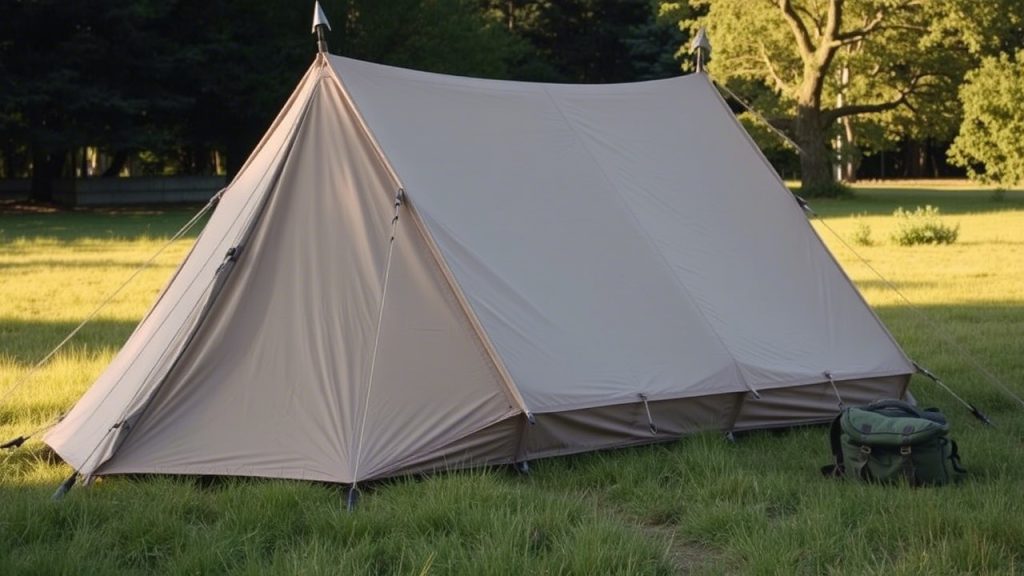
8. Add a Lightweight Pillow
You might think rolling up a jacket is enough, but a lightweight inflatable or compressible pillow can dramatically improve your sleep quality.
Why it adds comfort:
- Supports neck and spine alignment
- Reduces tossing and turning
- Packs down tiny but provides big comfort
Recommended pillows:
- Sea to Summit Aeros Premium Pillow
- Therm-a-Rest Air Head Lite
- Nemo Fillo Elite
A pillow weighs just a few ounces but makes your tent feel much more like home.
9. Use a Tent Light or Lantern
A lightweight, battery-powered lantern or tent light makes a huge difference when you’re winding down at night or getting ready in the morning.
Why it adds comfort:
- Provides soft, even lighting
- Reduces the need for headlamps
- Makes reading, organizing gear, and playing games easier
Recommended options:
- Black Diamond Moji Lantern
- Goal Zero Crush Light
- BioLite AlpenGlow Lantern
Look for rechargeable models to avoid carrying extra batteries.
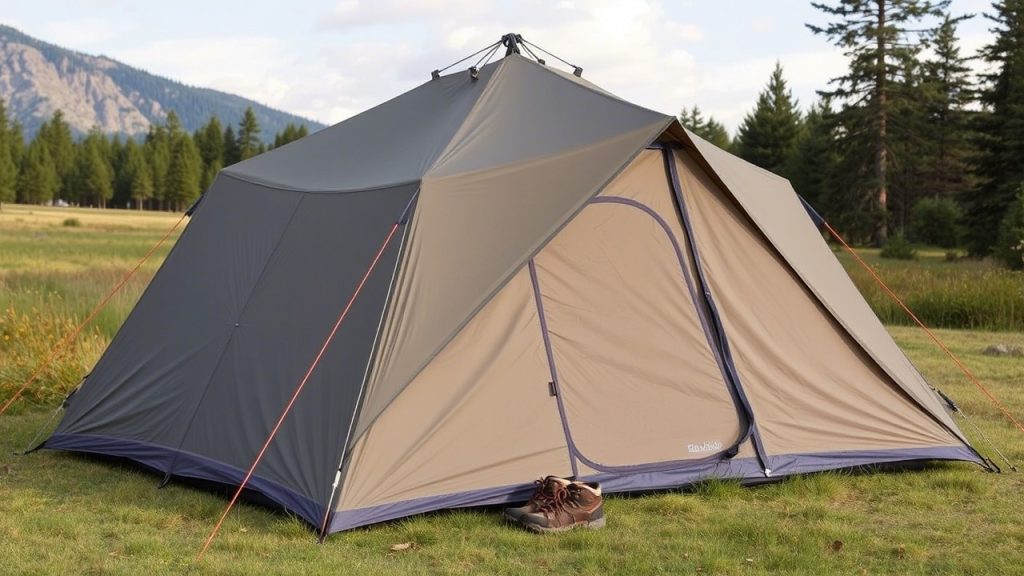
Extra Tips to Add Comfort Without Bulk
- Bring a pair of lightweight camp shoes or sandals to give your feet a break.
- Pack a small microfiber towel for drying off damp gear.
- Use compression sacks to pack sleeping bags and clothes more efficiently.
- Pack a small inflatable sit pad or foam pad for added comfort around camp.
- Choose ultralight quilts or sleeping bags with the right temperature rating for your trip.
11 Frequently Asked Questions
1. What is the lightest type of tent for backpacking?
Ultralight single-wall tents made from Dyneema or silnylon are some of the lightest, often weighing under two pounds, but they require more experience to set up and manage condensation.
2. Are double-wall tents worth the extra weight?
Yes, especially for comfort and versatility. They handle condensation better and provide more protection in variable weather.
3. How important is a tent footprint?
A footprint adds minimal weight but provides major benefits in durability and moisture protection. It’s highly recommended for rough or wet terrain.
4. What’s the ideal tent size for two people?
For two people, a two-person tent with at least two doors and vestibules is ideal. Consider going up to a three-person tent if you want extra space.
5. How do I reduce condensation inside my tent?
Ensure good ventilation, keep wet gear outside, and open vents or doors when weather allows. Using a double-wall tent also helps.
6. Are ultralight tents durable?
Yes, but they require more care. Use a footprint, avoid sharp objects, and set up carefully to extend their life.
7. How do I make a tent more comfortable in cold weather?
Choose an insulated sleeping pad, use a warm sleeping bag or quilt, and block drafts by sealing tent doors and vents appropriately.
8. Do I need a special pillow for camping?
While you can use a jacket or clothes, a lightweight inflatable or compressible pillow significantly improves sleep quality with little added weight.
9. What’s the best lighting option for a tent?
Small rechargeable lanterns or battery-powered string lights work well. They create an inviting, cozy atmosphere without draining headlamp batteries.
10. How can I save space when packing my tent?
Separate tent poles and fabric into different parts of your backpack, use compression sacks, and consider packing the rainfly separately to keep wet gear away from dry gear.
11. Are there tents designed specifically for comfort?
Yes, many backpacking tents now prioritize livability with vertical walls, extra headroom, and smart storage solutions without adding much bulk.
Final Thoughts
You don’t need to sacrifice comfort just to keep your backpack light. By focusing on smart, lightweight gear choices and thoughtful tent setups, you can make your nights in the outdoors restful, cozy, and enjoyable.
The 9 best tent ideas to add comfort without bulk we’ve shared here will help you create a lightweight, comfortable campsite that’s ready for any adventure. With the right tent, pad, pillow, and lighting, you’ll sleep better, recover faster, and love your time in nature even more.

